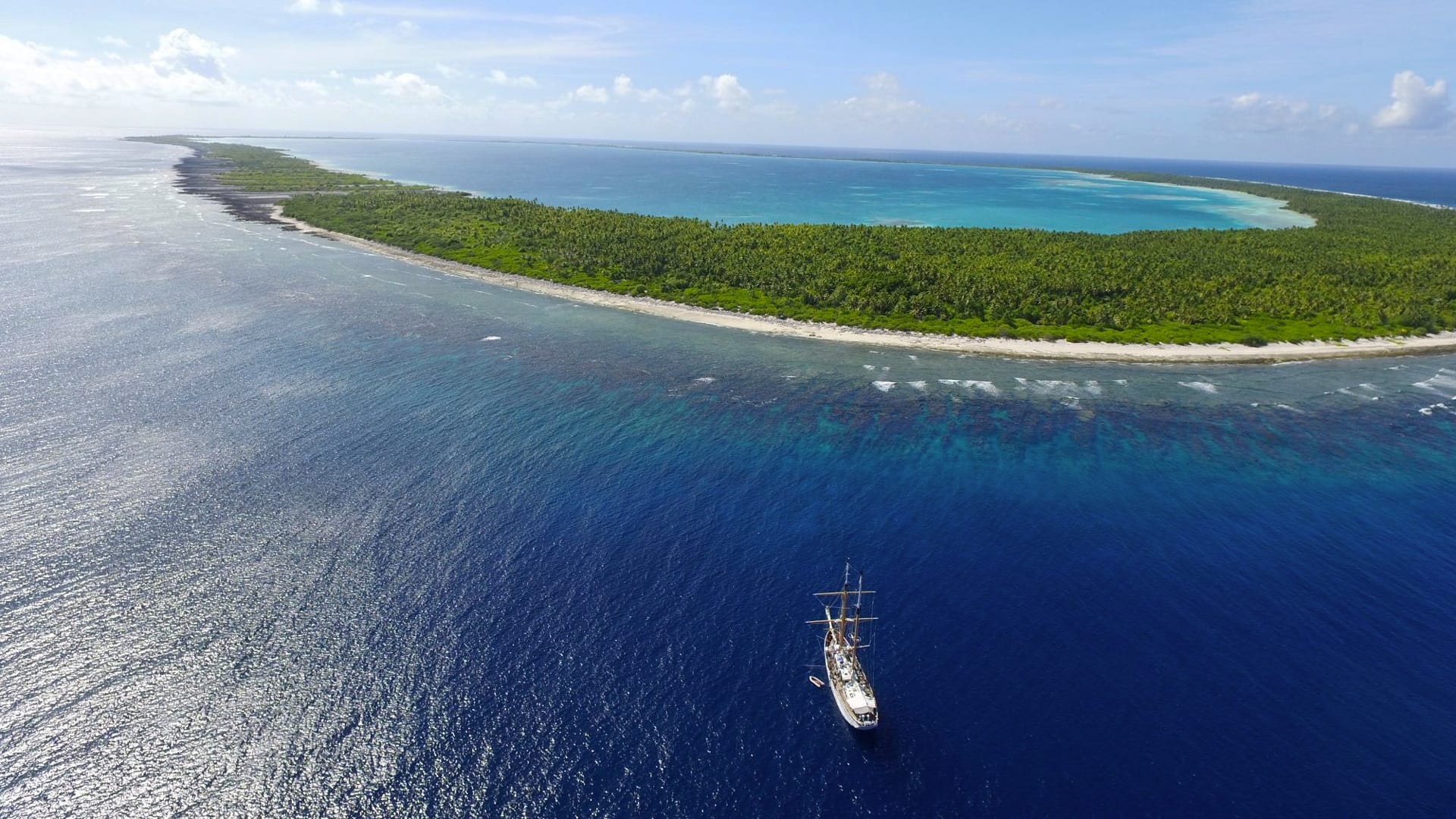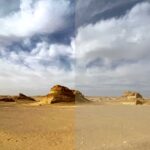Welcome to the enigmatic shores of Nikumaroro Island, tucked away in the Pacific’s wide embrace. This secluded atoll in the Republic of Kiribati has captivated explorers, history buffs, and mystery seekers for decades. Legends of Amelia Earhart’s disappearance linger, but there’s so much more to this island than a missing pilot. Dive into the depths of Nikumaroro and uncover its secrets, from ancient ruins to a diverse ecosystem. Join us on a journey that weaves together history, adventure, and the wonders of nature, unraveling the captivating tale of Nikumaroro Island.
A Haven of Life Above and Below the Waves
Picture an island in the middle of the vast Pacific Ocean, a place so remote that it feels untouched by time. This triangular-shaped coral atoll, measuring approximately 7.5 kilometers (4.7 miles) long and 2.5 kilometers (1.6 miles) wide, boasts a large central lagoon, two narrow entrances, and dense vegetation that reaches a maximum height of 15 meters (49 feet). This is Nikumaroro Island, a tiny speck of land with a giant story to tell.
Nikumaroro is more than just a pretty picture; it’s a haven for life both above and below the waves. The lagoon teems with marine life, from colorful fish darting through the coral to sharks patrolling the depths. You might even spot a coconut crab scuttling along the sandy beaches. Above the water, the island is a haven for birds, especially seabirds that migrate thousands of miles to nest on its shores. Recognizing this incredible biodiversity, UNESCO has designated Nikumaroro Island as part of the Phoenix Islands Protected Area, a World Heritage Site.
Did Amelia Earhart Land Here?
The name Nikumaroro Island might ring a bell because it’s closely tied to one of history’s most enduring mysteries: the disappearance of Amelia Earhart. Back in 1937, Amelia was attempting a daring feat – to fly all the way around the world. It was a journey filled with challenges and dangers, and tragically, her plane vanished over the Pacific Ocean, never to be seen again.
But the story didn’t end there. Nikumaroro Island has emerged as a strong contender for the location where Amelia’s plane might have landed. Why? Because people have found some pretty intriguing things on the island – items that may have belonged to Amelia and her navigator, Fred Noonan. Tools, personal items, and even potential human remains have been discovered, fueling years of research and speculation.
One of the most compelling pieces of evidence emerged in 1940 when a partial human skeleton was discovered on the island. Analysis of the bones suggested that they might have belonged to a woman of Earhart’s height and build, sending shockwaves through the scientific community. Unfortunately, the skeletal remains were subsequently lost, preventing definitive DNA testing.
Despite this setback, experts are still trying to piece together the puzzle of Amelia’s disappearance, and Nikumaroro Island holds many of the clues. Ongoing expeditions led by organizations like National Geographic continue to explore the island and its surrounding waters for evidence, using cutting-edge technology like remote sensing and conducting meticulous archaeological surveys.
Whispers of the Past and a Goddess’s Legacy
The island isn’t just about scientific mysteries; it’s also steeped in the rich culture and mythology of the Gilbertese people. Legend has it that the island was named after Nei Manganibuka, a goddess who is connected to the beautiful Buka tree, a native species found on the island. These stories, passed down through generations, add another layer of intrigue to the island’s already captivating story.
Before being known as Nikumaroro, the island was known by various names, including Kemins’ Island, Kemis Island, Motu Oonga, Motu Oona, and Mary Letitia’s Island. It witnessed unsuccessful attempts at coconut plantation establishment by both the Americans and the British, highlighting the challenges of inhabiting this remote location.
A Paradise in Peril?
Sadly, like many fragile ecosystems around the world, Nikumaroro Island faces an uncertain future. Climate change is a growing threat, with rising sea levels posing a risk to this low-lying atoll. Changes in weather patterns also put stress on the island’s unique plants and animals.
Uninhabited but Not Empty
You might be wondering, with a history so rich and a mystery so profound, does anyone actually live on Nikumaroro Island? The answer is no. Right now, Nikumaroro Island is completely uninhabited, without a single permanent resident.
The challenges of living on a remote atoll like Nikumaroro are significant. One of the most pressing issues is the scarcity of fresh water. The island’s porous limestone geology doesn’t retain rainwater efficiently, and the unpredictable rainfall patterns make it difficult to rely on consistent sources. While rainwater harvesting and accessing a fragile groundwater lens offer some possibilities, past attempts at colonization have been hampered by water scarcity.
An Island Frozen in Time, Yet Racing Towards the Future
Nikumaroro Island is a captivating blend of natural beauty, historical intrigue, and cultural significance. It’s a place where the echoes of the past mingle with the uncertainties of the future. Will the mystery of Amelia Earhart ever be fully solved within its shores? Only time, and continued exploration, will tell. While we grapple with the questions of yesterday, we’re also challenged to protect this fragile paradise for tomorrow. Nikumaroro Island reminds us of the power of discovery, the resilience of nature, and the importance of preserving the stories that shape our world.
Explore Further
Uncover the awe-inspiring grandeur of the pictures of the Great Pyramid of Khufu, an architectural marvel that stands as a testament to the ingenuity of ancient Egypt. Embark on a journey through the annals of history to discover the enigmatic allure of Pizarro’s gold, a legendary treasure that has captivated the imaginations of adventurers for centuries.
- Jesus Bible: Discover Jesus’s Story Throughout Scripture - April 27, 2025
- Don Luis: Unraveling the 16th-Century Virginia Mystery - April 27, 2025
- Captain J’s Kauai Tours: Unforgettable Na Pali Coast Adventures - April 27, 2025
















